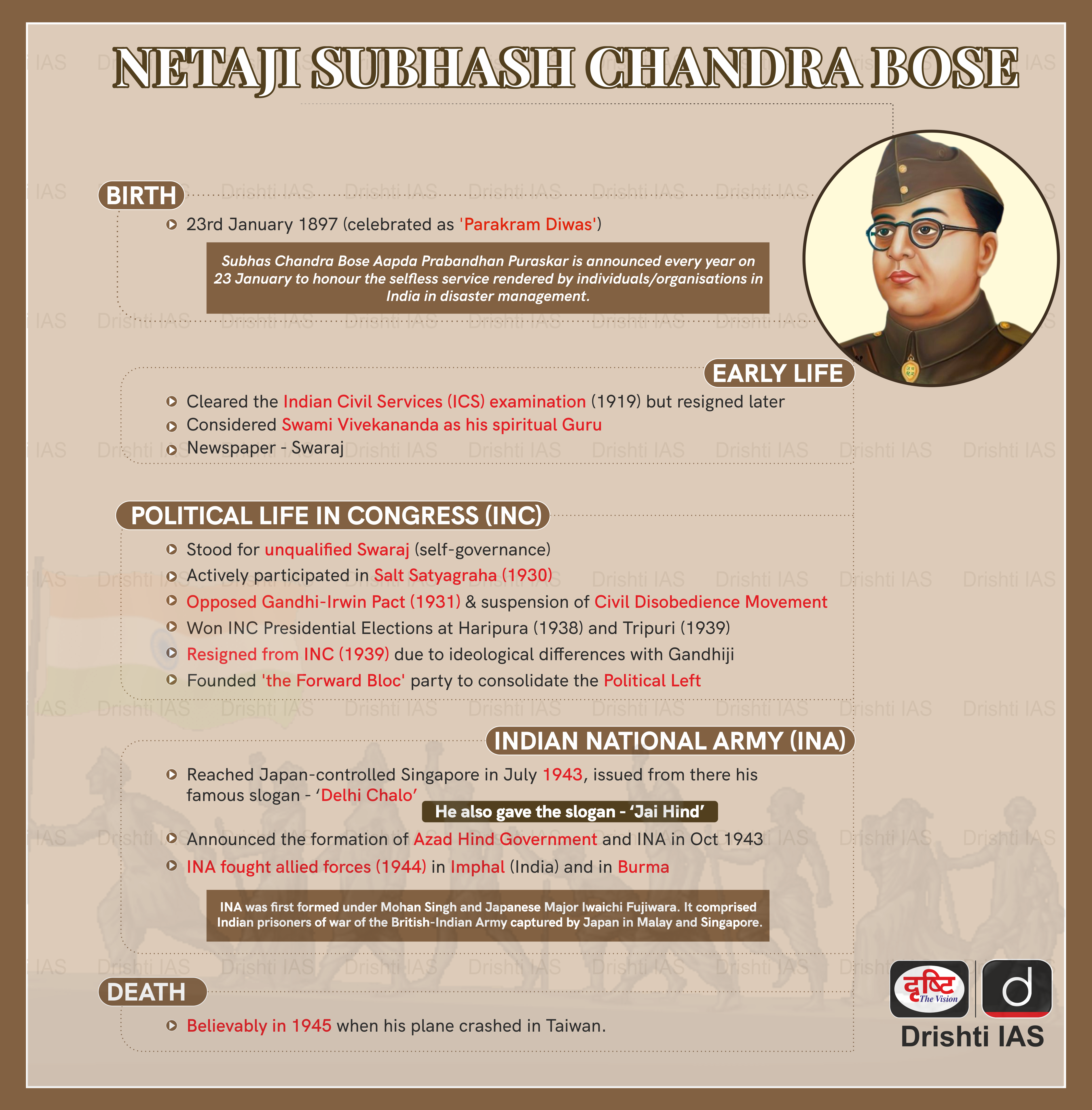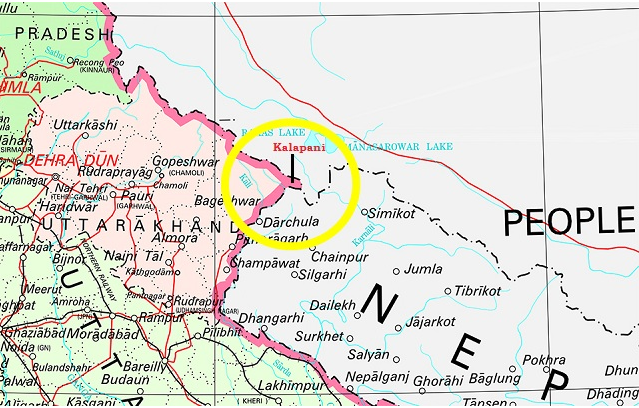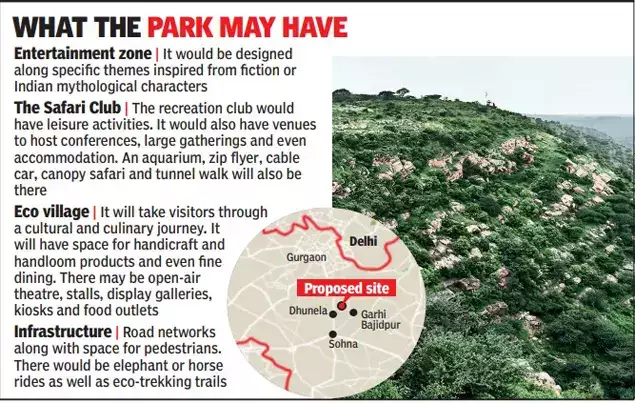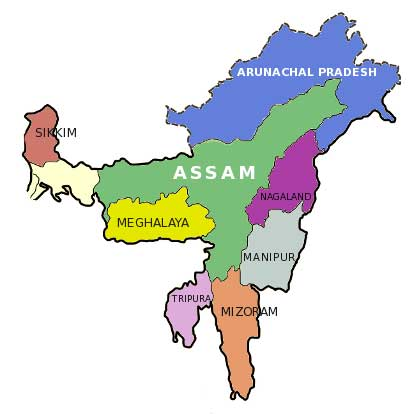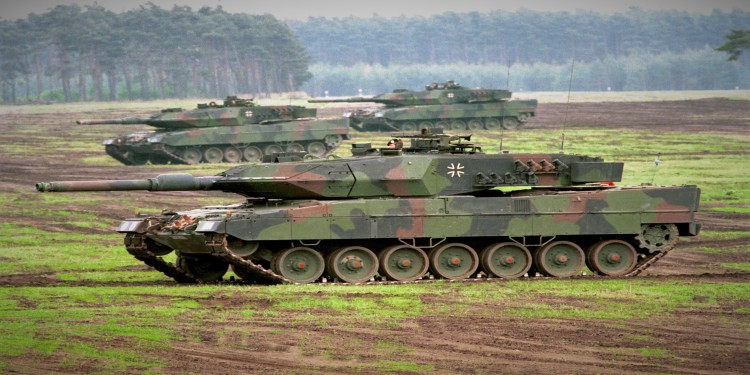Infographics
International Relations
China Builds New Dam in Tibet
Prelims: Line of Actual Control, Mabja Zangbo drive, River Ganga, Brahmaputra River.
Mains: Concerns over China’s Building New Dam in Tibet.
Why in News?
China is constructing a new dam on the Mabja Zangbo river in Tibet, close to the tri-junction of India, Nepal and Tibet, raising concerns since China has ramped up creation of military and dual use infrastructure and in the eastern and western sectors of the LAC (Line of Actual Control).
What is the Background?
- The development comes in the wake of China unveiling plans in 2021 to build a massive dam on the lower reaches of Yarlung Zangbo to generate up to 70 GW of power, three times that of the country’s Three Gorges dam, which is the world’s largest hydropower plant in terms of installed capacity.
- The Brahmaputra, known as Yarlung Tsangpo in China, is a 2,880 km long transborder river that originates in the Mansarovar lake and flows 1,700 km within Tibet, 920 km in Arunachal Pradesh and Assam and 260 km in Bangladesh. It accounts for nearly 30% of freshwater resources and 40% of India’s hydropower potential.
What is the Location of The Dam?
- The new dam is located around 16 km north of the tri-junction and is opposite the Kalapani area of Uttarakhand.
- The dam is on the Mabja Zangbo river, a tributary of the Ganga.
- Construction activity on the dam has been observed on the northern side of the river in Burang county, Tibet since May 2021.
- The Mabja Zangbo River flows into Nepal’s Ghaghara or the Karnali River before it joins the Ganga River in India.
What are the Concerns?
- Dominance over Water:
- China is building an embankment type dam with a reservoir, which raises concerns regarding China’s future control on water in the region.
- Likelihood of Military Etablishment:
- In addition to using water as leverage, the possibility of a military establishment by China near the tri-junction cannot be ruled out as the country had developed the same in the Yarlung Zangbo river near Arunachal Pradesh.
- Water Scarcity:
- China can use this dam to not only divert but also store water which could lead to a scarcity in the regions dependent on the Mabja Zangbo river and also lead to lower water levels in rivers such as the Ghaghara and the Karnali in Nepal.
- Reinforce Chinese Claims over disputed region:
- Dams close to the border could be used by China to strengthen its claim on the disputed areas in the region.
How is China aiming at acquiring Hydro Hegemony?
- China has built a large number of dams and dikes to control the flow of rivers on the Indus, Brahmaputra and Mekong.
- With the occupation of Tibet, China has acquired the starting points for rivers that flow into 18 countries.
- China has built several thousand dams, which can cause floods by suddenly releasing water or create droughts by turning off the tap, thus devastating the river’s ecosystem and disrupting normal human life.
- China plans to have four dams on the Brahmaputra River which would affect the river’s flows, India had lodged a complaint with China.
- China refused to share hydrographic data with India while it did so with Bangladesh, which resulted in huge destruction because of floods in Assam subsequently for which India was not prepared.
- China has already built eleven huge dams on the Mekong River, which worries the South-East-Asian countries.
UPSC Civil Services Examination, Previous Year Questions (PYQs)
Q. “China is using its economic relations and positive trade surplus as tools to develop potential military power status in Asia”. In the light of this statement, discuss its impact on India as her neighbour. (2017)


International Relations
India Sri Lanka Relations
For Prelims: International Monetary Fund (IMF), Sri Lanka’s official creditors, World Bank, Global Financial Stability Report, India-Sri Lanka Free Trade Agreement, 13th Amendment of Sri Lankan Constitution.
For Mains: India Sri Lanka Relations, Recent Issues in India-Sri Lanka Relations.
Why in News?
India sent written financing assurances to the International Monetary Fund (IMF), becoming the first bilateral creditor of the island nation to officially support its crucial debt restructure programme after last year’s economic meltdown.
- A bilateral agreement between India and Sri Lanka on raising the limit of the High Impact Community Development Project (HICDP) was also signed during the India’s External Affairs Minister’s Visit.
What is the Significance of India’s Financing Assurance?
- The International Monetary Fund’s provisional USD 2.9 billion package to Sri Lanka will be cleared only after Sri Lanka’s official creditors — China, Japan and India — have provided adequate financing assurances.
- The decision of financing assurance was also a reassertion of India’s belief in the principle of “neighborhood first”, and not leaving a partner to fend for themselves.
How are India’s Relations with Sri Lanka?
- About:
- India and Sri Lanka are two South Asian nations situated in the Indian Ocean region. Geographically, Sri Lanka is located just off the southern coast of India, separated by the Palk Strait.
- This proximity has played a significant role in shaping the relationship between the two countries.
- The Indian Ocean is a strategically important waterway for trade and military operations, and Sri Lanka's location at the crossroads of major shipping lanes makes it a critical point of control for India.
- India and Sri Lanka are two South Asian nations situated in the Indian Ocean region. Geographically, Sri Lanka is located just off the southern coast of India, separated by the Palk Strait.
- Relations:
- Historical Ties: India and Sri Lanka have a long history of cultural, religious, and trade ties dating back to ancient times.
- Economic ties: India is Sri Lanka’s third largest export destination, after the US and UK. More than 60% of Sri Lanka’s exports enjoy the benefits of the India-Sri Lanka Free Trade Agreement. India is also a major investor in Sri Lanka.
- Foreign Direct Investment (FDI) from India amounted to around USD 1.7 billion over the years from 2005 to 2019.
- Defence: India and Sri Lanka conduct joint Military (Mitra Shakti) and Naval exercise (SLINEX).
- Issues in India-Sri Lanka Relations:
- Killing of Fishermen: Killing of Indian fishermen by the Sri Lankan Navy is a lingering issue between these two nations.
- In 2019 and 2020, a total of 284 Indian fishermen were arrested and a total of 53 Indian boats were confiscated by the Sri Lankan authorities.
- Influence of China: China’s rapidly growing economic footprint (and political clout as a corollary) in Sri Lanka is straining India-Sri Lanka relations.
- China is already the largest investor in Sri Lanka, accounting for 23.6% of the total Foreign Direct Investment (FDI) during 2010-2019 as against 10.4% from India.
- 13th Amendment of the Sri Lankan Constitution: It envisages devolution of necessary powers to the provincial councils to address the just demand of the Tamil people for equality, justice, peace, and respect within a united Sri Lanka.
- India supports its implementation but the Sri Lankan government is yet to “fully implement” the 13th Amendment.
- Killing of Fishermen: Killing of Indian fishermen by the Sri Lankan Navy is a lingering issue between these two nations.
What is the International Monetary Fund (IMF)?
- About:
- The IMF was set up along with the World Bank after the Second World War to assist in the reconstruction of war-ravaged countries.
- The two organizations agreed to be set up at a conference in Bretton Woods in the US. Hence, they are known as the Bretton Woods twins.
- The IMF is governed by and accountable to the 190 countries that make up its near-global membership.
- India joined on 27th December 1945.
- The IMF was set up along with the World Bank after the Second World War to assist in the reconstruction of war-ravaged countries.
- Purpose:
- The IMF's primary purpose is to ensure the stability of the international monetary system — the system of exchange rates and international payments that enables countries (and their citizens) to transact with each other.
- The Fund's mandate was updated in 2012 to include all macroeconomic and financial sector issues that bear on global stability.
- Reports by IMF:
- Global Financial Stability Report.
- World Economic Outlook.
Conclusion
India, which has followed the "Neighbourhood First policy" to cement bonds with its neighbours, can walk that extra mile to help Sri Lanka out of the current crisis and help Sri Lanka towards realising its potential, to reap the rewards of a stable, friendly neighbourhood.
UPSC Civil Services Examination, Previous Year Questions (PYQs)
Prelims
Q. Elephant Pass, sometimes seen in the news, is mentioned in the context of the affairs of which one of the following? (2009)
(a) Bangladesh
(b) India
(c) Nepal
(d) Sri Lanka
Ans: (d)
Mains
Q. In respect of India-Sri Lanka relations, discuss how domestic factors influence foreign policy. (2013)
Q. ‘India is an age-old friend of Sri Lanka.’ Discuss India's role in the recent crisis in Sri Lanka in the light of the preceding statement. (2022)


Social Issues
Issues Faced by Females in Sports
Prelims: Sexism, Gender Disparity, Women Safety.
Mains: Issues Faced Females in Sports.
Why in News?
Recently, some sportspersons made allegations of sexual harassment against WFI (Wrestling Federation of India) president Brij Bhushan Sharan Singh.
- Sports Ministry demands explanation from WFI within 72 hours, if WFI fails to furnish the reply, the Ministry will proceed to initiate action against the Federation in terms of the provisions of the National Sports Development Code, 2011.
What is the Scenario of Such Allegations?
- According to RTI (Right to Information) Data, between 2010 to 2020, there were 45 complaints of sexual harassment to the SAI (Sports Authority of India), of which 29 were against coaches.
- In several of these reported cases, the accused were let off leniently, with punishments that consisted of transfers to a meager cut in pay or pension.
- Some of the cases have not seen the end of the tunnel with many dragging on for years, with no resolutions in sight.
- Abuse in sports was a poll issue in Germany in 2021. The Federal Parliament's Sports Committee hosted a public hearing on emotional, physical and sexualised violence in sports in May 2021.
- It is about time India discussed the issue and not wait for athletes to stage protests at Jantar Mantar to be heard.
- Living in the 21st century, where we have devised the technology to monitor robots to do our bidding, there’s still one aspect where we fall grossly short when it comes to progress — gender equality.
What are the Issues Faced by Sportswomen?
- Funding and Budget:
- Sportswomen face a lack of equal funding compared to men's athletics, making it difficult for them to compete and run consistent programs.
- Buoyant Sexism:
- Women are made to face the barrels of buoyant sexism on a daily basis, be it at work or even at home. They are monitored and judged by the way they dress, by the way they speak.
- Gender Disparity:
- Despite women's efforts to advocate for their social rights, they still do not receive the same level of respect or recognition on the professional front, particularly in the sports industry, as their male counterparts.
- Lack of Access and Costlier:
- Lack of physical education in schools and limited opportunities to play sports in both high school and college mean girls have to look elsewhere for sports –which may not exist or may cost more money.
- Often there is an additional lack of access to adequate playing facilities near their homes that makes it more difficult for girls to engage in sports.
- Safety and Transportation Issues:
- Sports require a place to participate – and for many girls, especially in dense urban environments, that means traveling to facilities through unsafe neighborhoods or lacking any means to get to a good facility miles away.
- And if there isn’t a safe option like carpooling with other families, the only option for a girl and her family may be to stay home.
- For example, Manipur is a sporting powerhouse, but 48% of female athletes travel over 10 km to reach the practice facility.
- Social Attitudes and Disfigurement:
- Despite recent progress, discrimination based on the real or perceived sexual orientation and gender identity of female athletes persists.
- Girls in sports may experience bullying, social isolation, negative performance evaluations, or the loss of their starting position.
- During socially fragile adolescence, the fear of being tagged “gay” is strong enough to push many girls out of the game.
- Decreased Quality Training:
- The facilities are not as good as the boys’ venues and the playing times may not be optimal.
- The availability of quality, trained coaches may be lacking in their community or these coaches may be more focused on the boys’ programs that have more money for training.
- Equipment, and even uniforms aren’t funded for many girls’ programs at the same levels as boys so their ability to grow and enjoy the sport is diminished. In short, sports just aren’t “fun” any more.
- Lack of Positive Role Models:
- Today’s girls are bombarded with images of external beauty, not those of confident, strong female athletic role models.
- Peer pressure can be hard for girls at any age; when that pressure isn’t offset with strong encouragement to participate in sports and healthy physical activity, the results may lead girls to drop out altogether.
- Limited Media Coverage:
- Women's sports are often underrepresented in the media, which can make it harder for female athletes to gain recognition and sponsorship opportunities.
- Pregnancy and Maternity:
- Female athletes often face challenges balancing motherhood and their sports careers.
- This can affect the training and competing opportunities for female athletes.
Why is it Important for More Women Participation in Sports?
- Physical and Mental Health:
- Sports can have a positive impact on physical and mental health for both men and women.
- Girls active in sports during adolescence and young adulthood are 20% less likely to get breast cancer later in life.
- Sports can have a positive impact on physical and mental health for both men and women.
- Gender Parity:
- By providing equal opportunities and resources for women in sports, we can help to break down barriers and stereotypes that limit women's potential and participation in other areas of life.
- Sport in its most basic form encourages balanced participation and has the capacity to promote gender equality (SDG Goal 5: Achieve gender equality and empower all Achieve women and girls)
- By providing equal opportunities and resources for women in sports, we can help to break down barriers and stereotypes that limit women's potential and participation in other areas of life.
- Economic Empowerment:
- Women who participate in sports often have more opportunities for education and employment, which can lead to greater economic empowerment.
- Rectify Societal Connotations:
- Women's participation in sports can also help to change societal attitudes towards women and their capabilities.
- By seeing women excel in sports, it can inspire more women to pursue their own goals and aspirations, and challenge stereotypes about what women are capable of achieving.
- Representation:
- Women's participation in sports can help to provide better representation for women in leadership roles, including coaching and administration.
- It can also serve as an inspiration for young girls to pursue sports as a career.
- Community Building:
- Sports can bring people together and promote greater understanding and respect between different groups within society.
- By promoting greater participation in sports among women, we can help to build stronger and more inclusive communities.
What are the Safeguard Measures for Sexual Harassment?
- The Sexual Harassment of Women at Workplace (Prevention, Prohibition and Redressal) Act, 2013.
- Protection of Women from Sexual Harassment (POSH) Act, 2013.
- Sexual Harassment electronic Box (SHe-Box).
- National Commission for Women (NCW).
- The Protection of Children from Sexual Offences (POCSO), 2012
Way Forward
- Women's participation in sports in India has been traditionally low due to cultural and societal attitudes. However, in recent years there have been efforts to promote and encourage women's participation in sports, such as the implementation of policies to increase funding and resources for female athletes, and the creation of programs to encourage girls to participate in sports from a young age.
- Despite these efforts, there is still a long way to go in terms of achieving gender parity in sports participation and representation in India.
- Sports in India is in the process of development. To accelerate this rate of development, a holistic approach should be adopted. Efforts are required in developing infrastructure, identifying sports talents, organising regular sports events, and generating awareness at the grass-root level.

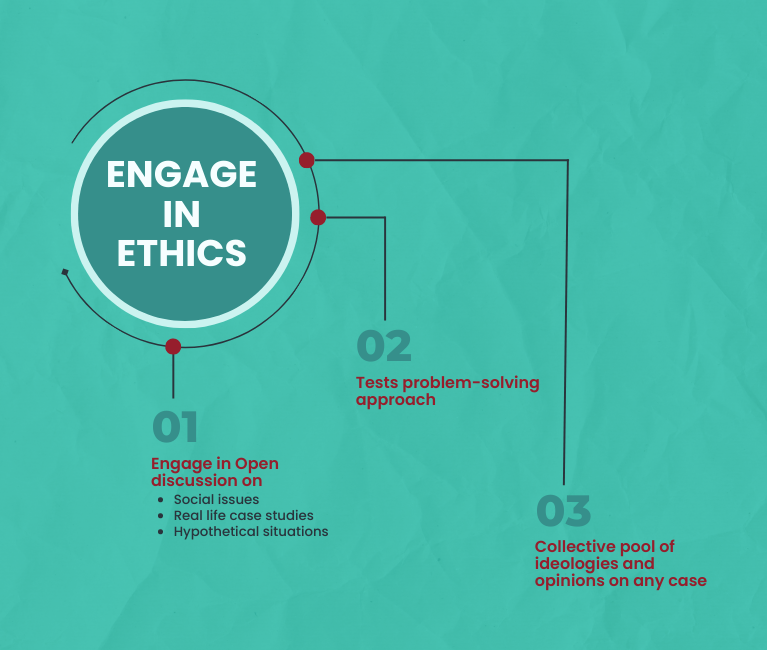
Biodiversity & Environment
Concerns Over Aravali Safari Park
Prelims: Aravali Mountain Range, Fold Mountain, Aquifers, Groundwater, Big Cats, WPA 1972.
Mains: Concerns Over Aravali Safari Park.
Why in News?
Recently, some Environmental Activists have raised concerns over the 10,000-acre Aravali safari park Project proposed in Haryana.
What are the Key Points of Safari Park?
- This project will be the largest such project in the world. Currently the largest curated safari park outside Africa is in Sharjah, which opened in February 2022, with an area of about two thousand acres.
- It aims to boost tourism and employment opportunities for the local people.
What are the Concerns?
- The Aravalli safari project is being conceived and designed as a zoo safari and not a natural jungle safari to see native Aravalli wildlife in their natural habitat.
- Conservation of the Aravallis does not even get a mention in the aims of the project mentioned in the Proposition.
- Vehicular traffic and construction in the area, the proposed safari park will also disturb the aquifers under the Aravalli hills that are critical reserves for the water-starved districts.
- These aquifers are interconnected and any disturbance or alterations in the pattern can significantly alter the groundwater table.
- The group has especially objected to the ‘underwater zone’ envisioned in the park since the site is a “water-scarce region”.
- In Nuh district, the groundwater table is already below 1,000 feet at many places; the tube wells, borewells and ponds are running dry; Gurugram district has many areas in the ‘red zone’.
- The location falls under the category of ‘forest’, according to many orders by the Supreme Court and the National Green Tribunal, and is protected under the Forest Conservation Act 1972. As such, cutting of trees, clearing of land, construction and real estate development is prohibited on this land.
- The group also highlighted that the construction proposed by the Haryana tourism department in May 2022 would be illegal and further damage the already damaged Aravalli ecosystem.
How are Wildlife and Forests Protected in India?
- The Wild Life (Protection) Act, 1972:
- It provides for stringent punishment for violation of its provisions. The Act also provides for forfeiture of any equipment, vehicle or weapon that is used for committing wildlife offence(s).
- Protected Areas, viz National Parks, Sanctuaries, Conservation Reserves and Community Reserves have been created in the country covering important habitats to provide better protection to wildlife, including threatened species and their habitat.
- Wildlife Crime Control Bureau (WCCB):
- WCCB coordinates with State/UTs and other enforcement agencies to gather intelligence about poaching and unlawful trade in wild animals and animal articles.
- Alerts and advisories were issued by WCCB on poaching and illegal trade of wildlife to the concerned State and Central agencies for preventive action.
- National Green Tribunal:
- It is a specialized judicial body equipped with expertise solely for the purpose of adjudicating environmental cases in the country.
- The Indian Forest Act, 1927:
- It seeks to consolidate the law relating to forests, the transit of forest produces and the duty that can be levied on timber and other forest produce.
- The Wild Life (Protection) Amendment Act, 2006:
- The Act provides for creating the National Tiger Conservation Authority and the Tiger and Other Endangered Species Crime Control Bureau.
- The Forest (Conservation) Act, 1980:
- It provides a higher level of protection to the forests and to regulate diversion of forest lands for non-forestry purposes. FC Act, 1980 – Prior approval of the Central Government is essential for DE-reservation of forest lands and / or diversion of forest lands for non-forestry purposes.
- Scheduled Tribes and Other Traditional Forest Dwellers (Recognition of Forest Rights) Act, 2006:
- It has been enacted to recognize and vest the forest rights and occupation of forest land in forest-dwelling Scheduled Tribes and other traditional forest dwellers, who have been residing in such forests for generations.
What are the Key Points of Aravali Mountain Range?
- About:
- The Aravallis of Northwestern India, one of the oldest fold mountains of the world, now form residual mountains with an elevation of 300m. to 900m. They stretch for a distance of 800 km. from Himmatnagar in Gujarat to Delhi, spanning Haryana, Rajasthan, Gujarat, and Delhi, the 692 kilometre (km).
- The mountains are divided into two main ranges – the Sambhar Sirohi Range and the Sambhar Khetri Range in Rajasthan, where their extension is about 560 km.
- The hidden limb of the Aravallis that extends from Delhi to Haridwar creates a divide between the drainage of rivers of the Ganga and the Indus
- These are fold mountains of which rocks are formed primarily of folded crust, when two convergent plates move towards each other by the process called orogenic movement.
- The Aravallis date back to millions of years when a pre-Indian sub-continent collided with the mainland Eurasian Plate. Carbon dating has shown that copper and other metals mined in the ranges date back to at least 5th century BC.
- Significance:
- The Aravallis act as a barrier between the fertile plains in the east and the sandy desert in the west. Historically, it is said that the Aravalli range checked the spread of the Thar desert towards the Indo-Gangetic plains, serving as a catchment of rivers and plains.
- The Aravalli is rich in biodiversity and provides habitat to 300 native plant species, 120 bird species and many exclusive animals like the jackal and mongoose.
- Aravallis have an impact upon the climate of northwest India and beyond. During monsoons, it provides a barrier and monsoon clouds move eastwards towards Shimla and Nainital, thus helping nurture the sub-Himalayan rivers and feeding the north Indian plains. In the winter months, it protects the fertile alluvial river valleys from the cold westerly winds from Central Asia.
- For Haryana, having the lowest forest cover at around 3.59% of the total forest cover in India, the Aravalli range is the only saving grace, providing the major portion of its forest cover.
- Aravallis also function as a groundwater recharge zone for the regions around that absorb rainwater and revive the groundwater level.
- This range is considered the “lungs” for the world’s most polluted air of Delhi–National Capital Region (NCR).
UPSC Civil Services Examination, Previous Year’s Question (PYQs)
Prelims
Q. Consider the following statements: (2019)
- As per recent amendment to the Indian Forest Act, 1927, forest dwellers have the right to fell the bamboos grown on forest areas.
- As per the Scheduled Tribes and Other Traditional Forest Dwellers (Recognition of Forest Rights) Act, 2006, bamboo is a minor forest produce.
- The Scheduled Tribes and Other Traditional Forest Dwellers (Recognition of Forest Rights) Act, 2006 allows ownership of minor forest produce to forest dwellers.
Which of the statements given above is/are correct?
(a) 1 and 2 only
(b) 2 and 3 only
(c) 3 only
(d) 1, 2 and 3
Ans: (b)
Exp:
- The Indian Forest (Amendment) Bill 2017 permits felling and transit of bamboo grown in non-forest areas. However, bamboo grown on forest lands would continue to be classified as a tree and would be guided by the existing legal restrictions. Hence, statement 1 is not correct.
- The Scheduled Tribes and Other Traditional Forest Dwellers (Recognition of Forest Rights) Act, 2006, recognises bamboo as a Minor Forest Produce and vests the “right of ownership, access to collect, use and dispose of minor forest produce” with Scheduled Tribes and Traditional Forest Dwellers. Hence, statements 2 and 3 are correct.
- Therefore, option (b) is the correct answer.
Mains
Q. What are the consequences of Illegal mining? Discuss the Ministry of Environment and Forests’ concept of GO AND NO GO zones for coal mining sector. (2013)
Q. Examine the status of forest resources of India and its resultant impact on climate change. (2020)


Indian Economy
Gig Workers’ Rights
For Prelims: Gig Economy, Unorganised Workers Social Security Act 2008, Supreme Court, High-speed internet, Covid-19 pandemic, Pension schemes, Digital Divide, Social Security.
For Mains: Growth Drivers of the Gig Economy in India, Issues Related to Gig Workers in India.
Why in News?
On September 20, 2021, the Indian Federation of App-based Transport Workers, on behalf of gig workers, filed a public interest litigation in the Supreme Court demanding that the Union government provide succour to workers affected by the pandemic.
- The petition has asked for ‘gig workers’ and ‘platform workers’ to be declared as ‘unorganised workers’ so they come under the purview of the Unorganised Workers Social Security Act, 2008.
What is the Gig Economy?
- About:
- A Gig economy is a free market system in which temporary positions are common and organisations contract with independent workers for short-term engagements.
- Gig Worker: A person who performs work or participates in a gig work arrangement and earns from such activities outside of traditional employer-employee relationship.
- A Gig economy is a free market system in which temporary positions are common and organisations contract with independent workers for short-term engagements.
- Growth Drivers of the Gig Economy in India
- Rise of the Internet and Mobile Technology: The widespread adoption of smartphones and the availability of high-speed internet has made it easier for workers and businesses to connect through online platforms, facilitating the growth of the gig economy.
- Economic Liberalisation: The Indian government's economic liberalisation policies have led to increased competition and a more open market, which has encouraged the growth of the gig economy.
- Increasing Demand for Flexible Work: The gig economy is particularly attractive for Indian workers who are looking for flexible work arrangements that allow them to balance their personal and professional lives.
- Demographic Factors: The gig economy is also driven by the large and growing number of young, educated and ambitious Indians who are seeking to improve their livelihoods with side income generation.
- Case of China:
- In China, the government's scrutiny over food delivery platforms has increased amidst public discourse. This was especially the case in Wuhan, the Covid-19 pandemic’s epicentre, where there was a clear transition of social discourse in favour of delivery workers.
- In July 2021, seven government agencies of Chna jointly passed guidelines that called for better protection of food delivery workers' rights in areas including salaries, workplace safety, working environment and dispute settlement.
- Issues Related to Gig Workers in India:
- Lack of Job and Social Security: Many gig workers in India are not covered by labour codes and do not have access to benefits such as health insurance and retirement plans.
- Additionally, gig workers often do not receive the same level of protection as traditional employees in the event of injury or illness.
- Digital Divide: The gig economy heavily relies on technology and internet access, this creates a barrier for those who lack access to these resources, and further exacerbates income inequality.
- Lack of Data: There is a lack of data and research on the gig economy in India which makes it difficult for policy makers to understand its size, scope, and impact on the economy and workforce.
- Exploitation by Companies: Gig workers in India are often paid less than traditional employees and may not have the same legal protections.
- Some companies may also exploit gig workers by misclassifying them as independent contractors to avoid liability and avoid paying taxes.
- Lack of Job and Social Security: Many gig workers in India are not covered by labour codes and do not have access to benefits such as health insurance and retirement plans.
Way Forward
- Social Security Blanket: The government should ensure that gig workers have access to social security programs such as pension schemes and health insurance to ensure financial security for older workers.
- Also, gig workers should be granted the same labour rights as traditional employees, including the right to organise and form unions.
- Education and Training: The government should invest in education and training programs for gig workers to improve their skills and increase their earning potential.
- Encourage Fair Competition and Innovation: Government can encourage fair competition by having regulations that prevent companies from misclassifying workers as independent contractors and by enforcing fair trade practices.
UPSC Civil Services Examination, Previous Year Question:
Q. Examine the role of ‘Gig Economy’ in the process of empowerment of women in India. (2021)


Indian Polity
Chargesheet: Not a Public Document
For Prelims: Chargesheet, First Information Report (FIR), Criminal Code of Procedure (CrPC).
For Mains: Difference Between Chargesheet and FIR, Why Chargesheet is not a Public Document.
Why in News?
Recently, the Supreme Court (SC) ruled that chargesheets are not ‘public documents’ and enabling their free public access violates the provisions of the Criminal Code of Procedure (CrPC) as it compromises the rights of the accused, victim, and the investigation agencies.
What is a Chargesheet?
- About:
- A chargesheet, as defined under Section 173 CrPC, is the final report prepared by a police officer or investigative agency after completing their investigation of a case.
- In the K Veeraswami vs Union of India & Others (1991) case, the SC ruled that the chargesheet is a final report of the police officer under section 173(2) of the CrPC.
- A chargesheet must be filed against the accused within a prescribed period of 60-90 days, otherwise, the arrest is illegal, and the accused is entitled to bail.
- A chargesheet, as defined under Section 173 CrPC, is the final report prepared by a police officer or investigative agency after completing their investigation of a case.
- Chargesheet Should Contain:
- Details of names, the nature of the information, and offences. Whether the accused is under arrest, in custody, or has been released, whether any action was taken against him, these are all important questions answered in the chargesheet.
- Procedure after Filing the Chargesheet:
- After preparing the chargesheet, the officer-in-charge of the police station forwards it to a Magistrate, who is empowered to take notice of the offences mentioned in it so that the charges can be framed.
How is a Chargesheet Different from an FIR?
- Provision:
- The term, ‘chargesheet’ is defined under Section 173 of the CrPC but First Information Report (FIR), has not been defined in either the Indian Penal Code (IPC) or the CrPC. Instead, it finds a place under the police regulations/ rules under Section 154 of CrPC, which deals with ‘Information in Cognizable Cases’.
- Time of Filing:
- While the chargesheet is the final report filed towards the end of an investigation, an FIR is filed at the ‘first’ instance’ that the police are informed of a cognizable offense (offence for which one can be arrested without a warrant; such as rape, murder, kidnapping).
- Determination of Guilt:
- An FIR does not decide a person’s guilt but a chargesheet is complete with evidence and is often used during the trial to prove the offenses the accused is charged with.
- Terms & Conditions:
- After filing an FIR, the investigation takes place. Under Section 169 of the CrPC, the police can only forward the case to the Magistrate if they have sufficient evidence, otherwise, the accused is released from custody.
- According to Section 154 (3) of the CrPC, if any person is aggrieved by the refusal of authorities to file an FIR, they can send the complaint to the Superintendent of Police, who will either investigate himself or direct it to their subordinate.
- A chargesheet is filed by the police or law-enforcement/ investigative agency only after they have gathered sufficient evidence against the accused in respect of the offenses mentioned in the FIR, otherwise, a ‘cancellation report’ or ‘untraced report’ can be filed when due to lack of evidence.
- After filing an FIR, the investigation takes place. Under Section 169 of the CrPC, the police can only forward the case to the Magistrate if they have sufficient evidence, otherwise, the accused is released from custody.
What is a FIR?
- It is a report of information that reaches the police first in point of time and that is why it is called the First Information Report.
- It is generally a complaint lodged with the police by the victim of a cognizable offence or by someone on his/her behalf. Anyone can report the commission of a cognizable offence either orally or in writing.
Why is a Chargesheet not a Public Document?
- According to the Court, a chargesheet cannot be made publicly available as it’s not a ‘public document’ under Sections 74 and 76 of the Evidence Act, 1872.
- Section 74: It defines public documents as those which form the acts or records of sovereign authority, official bodies, tribunals, and of public offices either legislative, judicial or executive in any part of India, Commonwealth or a foreign country. It also includes public records “kept in any State of private documents”.
- Documents mentioned in this section are only public documents, and certified copies of them must be provided by the public authority having custody of them.
- Copy of chargesheets along with necessary public documents cannot be said to be public documents under this section.
- Documents mentioned in this section are only public documents, and certified copies of them must be provided by the public authority having custody of them.
- Section 76: Any public officer having custody of such documents must provide a copy upon demand and payment of a legal fee, along with a certificate of attestation that states the date, seal, name, and designation of the officer.
- Section 74: It defines public documents as those which form the acts or records of sovereign authority, official bodies, tribunals, and of public offices either legislative, judicial or executive in any part of India, Commonwealth or a foreign country. It also includes public records “kept in any State of private documents”.
- As per Section 75 of the Evidence Act, all documents other than those listed under Section 74 are private documents.
- The Supreme Court in the Youth Bar Association of India vs Union of India case (2016) directed all police stations in the country to publish copies of FIRs online within 24 hours of registration, except in cases where offenses were of sensitive nature.
- Only FIRs were covered by this ruling, and chargesheets were not included.


Social Justice
Prison Reforms
For Prelims: 57th All-India Conference of Director Generals/ Inspector Generals of Police, National Data Governance Framework, Criminal Justice System, National Crime Records Bureau (NCRB)-Prison Statistics India, Custodial rapes, Amitava Roy (retd.) Committee.
For Mains: Status of Prison Administration in India, Issues Related to Prison in India.
Why in News?
Recently, the Prime Minister suggested prison reforms to improve jail management and recommended repealing obsolete criminal laws, at the 57th All-India Conference of Director Generals/ Inspector Generals of Police, organised by the Intelligence Bureau (IB).
What are the Key Highlights of the Prime Minister’s Address?
- He emphasised on the importance of National Data Governance Framework for the smoothing of data exchange, across agencies.
- Also, making the police forces more sensitive and training them in emerging technologies.
- He talked about leveraging technological solutions like biometrics etc., and the need to further strengthen traditional policing mechanisms like foot patrols.
- He also emphasised on enhanced cooperation between the State Police and Central Agencies to leverage capabilities and share best practices replicating the model of the DGsP/IGsP Conference at the State/district levels, for discussing emerging challenges and evolving best practices among their teams.
What is the Status of Prison Administration in India?
- About:
- Prison administration is an important component of the criminal justice system. There is a paradigm shift in social viewpoint towards prisoners in the last century.
- Earlier system of prison with a punitive attitude where inmates were forcibly confined and deprived a variety of freedom as a form of punishment has changed with a change in social perception towards prison and prisoners.
- It is now treated as a correction or improvement facility which itself indicates that there is more emphasis on reformation of prisoners than to punish them.
- Prison administration is an important component of the criminal justice system. There is a paradigm shift in social viewpoint towards prisoners in the last century.
- Structure of the Criminal Justice System in India:
- The Indian Criminal Justice System is composed of government agencies that enforce the law, adjudicate crimes, and correct criminal behaviour.
- It has four subsystems:
- Legislature (Parliament)
- Enforcement (Police)
- Adjudication (Courts)
- Corrections (Prisons, Community Facilities)
- Issues Related to Prison in India:
- Pendency of Cases: As per the records of 2022, over 4.7 crore cases are pending in Indian courts across different levels of the judiciary.
- Also, according to National Crime Records Bureau (NCRB)-Prison Statistics India, 67.2% of total prison population in India comprises trial prisoners.
- Colonial Nature and Obsolete Laws: Both substantive and procedural aspects of the Indian criminal justice system were designed with the purpose of ruling the nation in British colonial times.
- In light of this, the relevance of these 19th century laws is debatable in the 21st century.
- Inhumane Behaviour Behind Bars: Over the years, critics have repeatedly complained about the indifferent and even inhuman behaviour of prison staff.
- Also, there have been many instances of custodial rapes and deaths resulting in violation of prisoners' human rights.
- Overcrowding: Many prisons in India are overcrowded, with facilities designed to hold a certain number of inmates being filled well beyond capacity.
- For example, in 2020 it was reported that the Tihar Jail in Delhi, which has a capacity of around 7,000 inmates, held more than 15,000 prisoners.
- Inadequate Staff: Many prisons in India are understaffed, which can lead to poor conditions and a lack of security.
- For example, in 2020 it was reported that the Puzhal Central Prison in Chennai, Tamil Nadu had only one guard for every 100 prisoners.
- Also, as per the Prison Act, 1894 and Prisoner Act, 1900, there should be a welfare officer and a law officer in each jail but recruitment of these officers remains pending.
- Pendency of Cases: As per the records of 2022, over 4.7 crore cases are pending in Indian courts across different levels of the judiciary.
Way Forward
- Making Prisons Correctional Institutions: The ideal policy prescription of making prisons into places of rehabilitation and “correctional institutions” will only be achieved when the issues of unrealistically low budgetary allocation, high workloads and the unmindfulness of the police regarding procedural safeguards are addressed.
- Recommendation for Prison Reforms: The Supreme Court appointed Justice Amitava Roy (retd.) Committee which gave the following recommendations to address the overcrowding of prisons:
- Speedy trial remains one of the best ways to remedy the unwarranted phenomenon of overcrowding.
- There should be at least one lawyer for every 30 prisoners, which is not the case at present.
- Special fast-track courts should be set up to deal exclusively with petty offences which have been pending for more than five years.
- The concept of plea bargaining, in which the accused admits guilt for a lesser sentence, should be promoted.
- Improving Prison Management: This includes providing proper training and resources to prison staff, as well as implementing effective systems for monitoring and accountability.
- This also includes providing basic amenities such as clean drinking water, sanitation, and medical facilities to inmates.
UPSC Civil Services Examination, Previous Year Question (PYQ)
Q.1 Instances of the President’s delay in commuting death sentences has come under public debate as denial of justice. Should there be a time specified for the President to accept/reject such petitions? Analyse. (2014)
Q.2 National Human Rights Commission (NHRC) in India can be most effective when its tasks are adequately supported by other mechanisms that ensure the accountability of a government. In light of above observation assess the role of NHRC as an effective complement to the judiciary and other institutions in promoting and protecting human rights standards. (2014)


Rapid Fire
Rapid Fire Current Affairs
Statehood Day of Manipur, Tripura and Meghalaya
Recently, on 21 January, the states of Manipur, Tripura and Meghalaya observed their 51st statehood day. The three states gained their statehood in 1972 under the North-Eastern Areas (Re-organisation) Act, 1971.
A few days before India’s Independence, the Maharaja of Manipur, Bodhachandra Singh, signed the Instrument of Accession with the Indian govt. on the assurance that the internal autonomy of Manipur would be maintained.
Tripura accepted merger with the Indian Union on 15th November, 1949. Queen Kanchan Prabha, the then regent of Tripura (after the demise of King Bir Bikram) was instrumental in this merger.
Meghalaya came into existence as an autonomous state within the state of Assam in April 1970 comprising the United Khasi and Jaintia Hills and the Garo Hills districts.
Read More - Statehood Day of Manipur, Meghalaya and Tripura
Additional Tier-1 Bonds
The Bombay HC recently quashed the write-off of Additional Tier-1 (AT1) bonds worth Rs 8,400 crore issued by Yes Bank Ltd, bringing relief to investors.
A SEBI probe found that Yes bank facilitated the selling of AT1 bonds from institutional investors to individual investors and during the process of selling the AT1 bonds, the latter were not informed about all the risks involved in the subscription of these bonds.
AT1 bonds are unsecured bonds that have perpetual tenor; no maturity date. These bonds are typically used by banks to bolster their core or tier-1 capital. AT1 bonds are subordinate to all other debt and only senior to common equity.
Read More - Additional Tier 1 Bonds
Leopard 2 Tank
Amid the ongoing talks among NATO allies regarding supplying defence equipment to Ukraine, Germany is sceptical about allowing its Leopard 2 tanks to be sent to Ukraine.
The Leopard 2 is one of the world’s leading battle tanks, used by the German Army for decades and by the militaries of Canada, Indonesia and many other European nations. It has served in conflicts in Afghanistan, Kosovo and Syria. Germany believes re-exporting German-made tanks without its permission would be illegal.
Leopard 2, powered by a diesel engine, features night-vision equipment and a laser range finder enabling it to better aim at a moving target while travelling over rough terrain.
Until now, both Ukraine and Russia have used Soviet-era tanks in battle. Supplies of the Leopard 2 would help Ukraine offset Russia’s superiority in artillery firepower.
Read More - Russia-Ukraine Conflict
PM-KISAN handout may rise to Rs. 8000
In a move to provide a modicum of consumption booster, the Centre may enhance the income support to farmers under the PM-KISAN scheme to Rs. 8,000 from Rs. 6,000/year, in the upcoming Budget.
Under PM-KISAN, an amount of Rs. 6000 is annually transferred to each farmer’s direct benefit transfer (DBT)-linked bank account in three equal instalments, irrespective of their land holdings. The number of beneficiaries has crossed 110 million from 31 million at the beginning of the scheme (in 2019).
PM-KISAN is a Central Sector (CS) Scheme; however, the entire responsibility of identification of beneficiary farmer families rests with the State / UT Govts.
Read More - Pradhan Mantri Kisan Samman Nidhi (PM-KISAN)



